Best AI Outreach Tools for Sales Prospecting
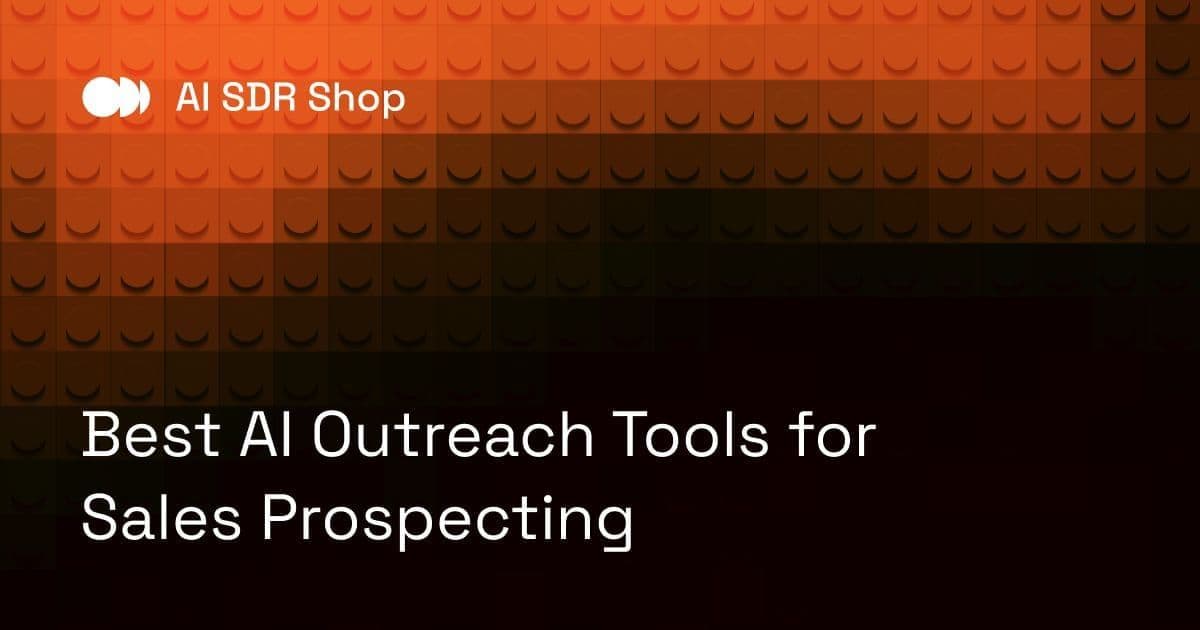
Best AI Outreach Tools for Sales Prospecting
AI-powered tools are transforming sales prospecting by automating repetitive tasks, personalizing outreach, and improving lead engagement. These tools help sales teams save time, increase efficiency, and connect with prospects more effectively. Here’s a quick overview of the top AI outreach tools in 2025:
Apollo.io: Offers lead scoring, email sequencing, and a freemium model with optional paid plans for advanced features.
HubSpot Sales Hub: Combines CRM with AI tools like an email content assistant. Free tier available; advanced plans require annual contracts.
LinkedIn Sales Navigator: Leverages LinkedIn’s network with lead recommendations and InMail messaging. Works well with CRMs.
Seamless.AI: Focuses on real-time contact data verification and smart searches. Free plan available; paid plans use a credit-based model.
Gong: Analyzes sales calls and emails to extract actionable insights. Requires annual contracts with per-seat pricing.
Quick Comparison:
| Tool | Key Features | Pricing |
|---|---|---|
| Apollo.io | Lead scoring, email workflows | Freemium + Paid |
| HubSpot Sales Hub | Email assistant, CRM integration | Free + Paid Plans |
| LinkedIn Sales Nav | LinkedIn insights, InMail messaging | Subscription-based |
| Seamless.AI | Real-time data, smart searches | Credit-based |
| Gong | Call/email analysis, insights | Per-seat, annual |
These tools cater to different needs, from lead generation to outreach optimization. Choose based on your team's size, outreach goals, and budget.
7 Best AI Cold Outreach Software Tools To 10X Your Campaigns 2024
::: @iframe https://www.youtube.com/embed/afw84oKFc7s :::
1. Apollo.io
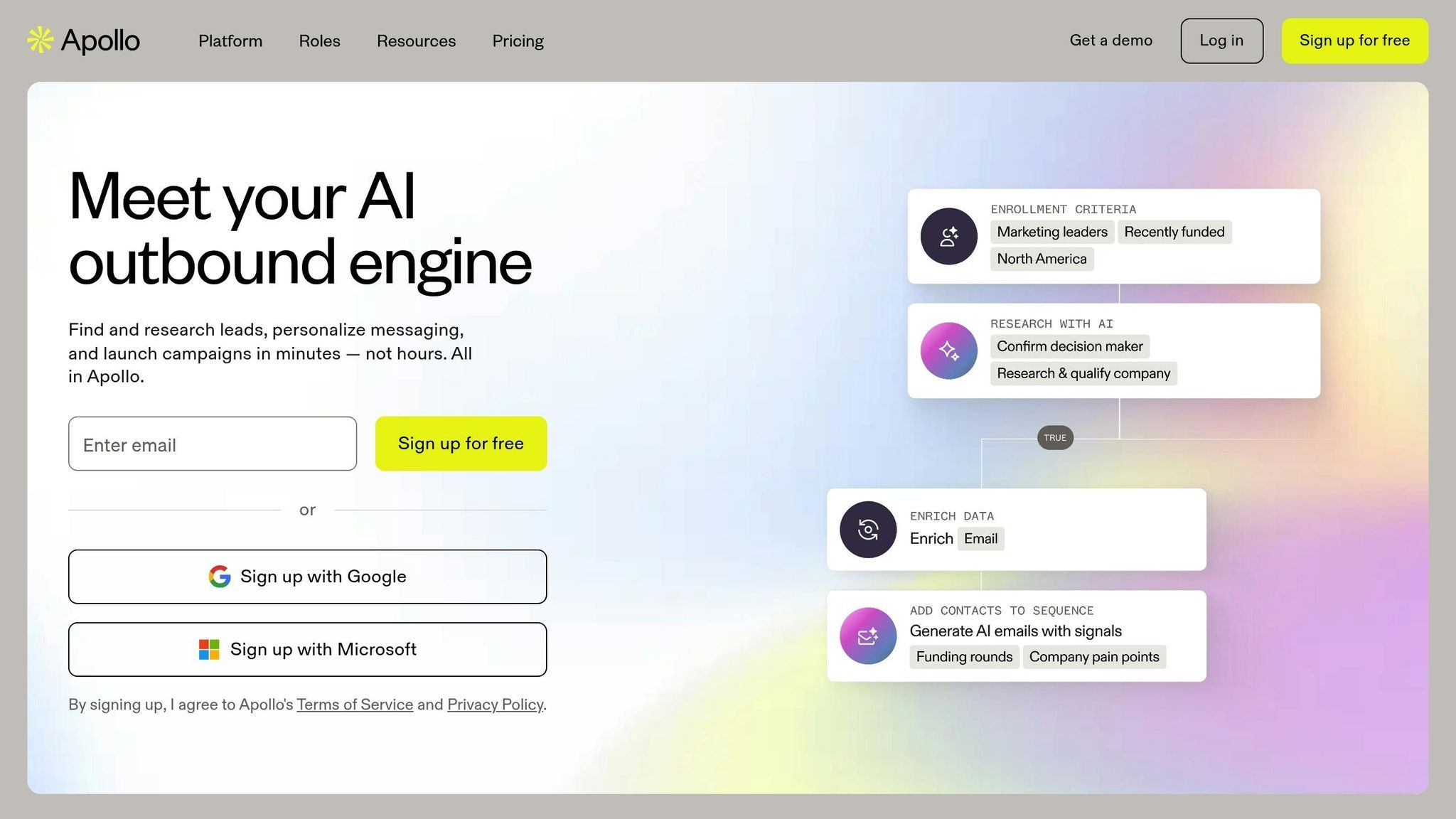
Apollo.io is a platform designed to simplify prospecting, engagement, and analytics for sales teams.
AI Capabilities
Apollo.io leverages AI to make sales processes more efficient. Its lead scoring feature uses machine learning to analyze prospect behavior and engagement, helping sales teams identify and prioritize the most promising leads. For instance, the platform ranks contacts and accounts based on specific indicators, allowing professionals to focus on high-conversion opportunities. Additionally, the email writing assistant provides suggestions for subject lines and content ideas, though it’s best when tailored by users for a personal touch.
Multi-Channel Outreach
With Apollo.io, users can manage outreach across multiple channels, including email, LinkedIn, and phone. The platform allows for creating automated workflows, such as follow-up sequences triggered by actions like email opens or link clicks. Its LinkedIn integration makes it easy to send connection requests and personalized messages directly, using prospect data to craft more relevant communication.
CRM Integration
Apollo.io works seamlessly with major CRM systems, offering two-way synchronization and custom webhook integrations. This ensures that leads can be pushed into the CRM effortlessly while maintaining up-to-date interaction histories.
Pricing
Apollo.io operates on a freemium model with additional paid plans for more advanced features. The free plan covers basic functionality, while paid options unlock extra outreach credits, advanced tools, and premium support. Teams with higher outreach needs can also purchase additional email credits, making the platform adaptable to varying demands.
2. HubSpot Sales Hub
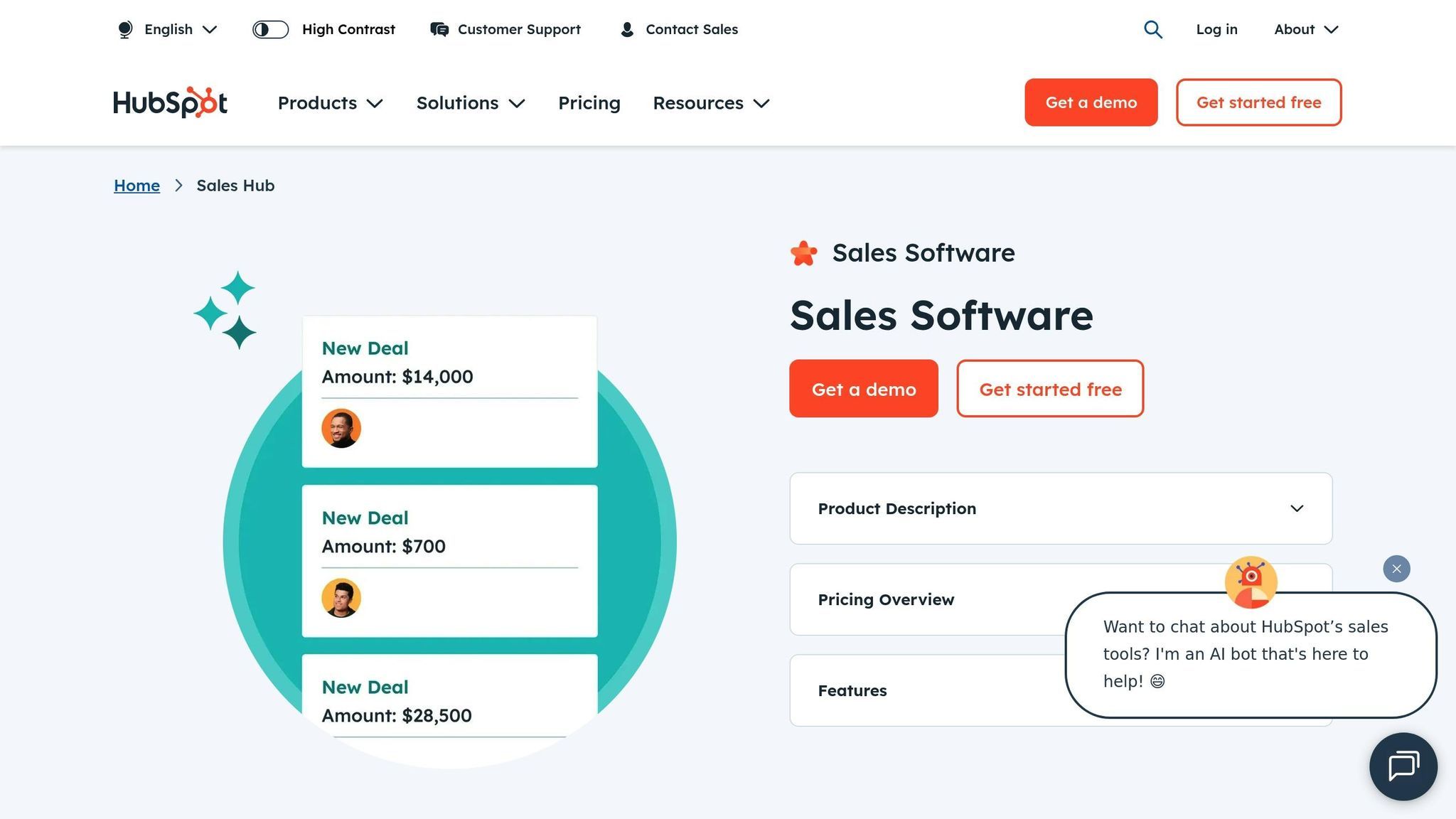
HubSpot Sales Hub brings together CRM tools and AI-driven features to simplify prospecting and outreach for sales teams.
AI Capabilities
This platform integrates AI tools designed to make sales prospecting more efficient. One standout feature is the Email Content Assistant, which helps sales teams create professional outreach emails for various scenarios - whether it’s cold outreach, introductions, or follow-ups. Users can customize emails by specifying the type, recipient, and purpose, and the tool generates drafts that can be further tailored with personal details.
Another key feature is the Reporting Assistant, which delivers real-time, customizable reports and organizes them into dashboards. This makes it easier for teams to analyze performance without wasting time on manual report creation. These AI tools are deeply integrated into HubSpot's CRM, ensuring a smooth and cohesive workflow.
Multi-Channel Outreach
HubSpot Sales Hub's AI tools primarily focus on enhancing email outreach through the Email Content Assistant, helping sales teams connect with prospects more effectively.
CRM Integration
As a unified CRM platform, HubSpot Sales Hub centralizes contact and communication management. Its AI tools fit seamlessly into existing workflows, eliminating the hassle of syncing data across multiple systems.
Pricing
HubSpot Sales Hub offers four pricing tiers based on the number of users: Free Tools, Starter, Professional, and Enterprise. The Professional and Enterprise plans require annual contracts and include onboarding fees of $1,500 and $3,500, respectively.
The platform delivers tangible results, with users reporting a 36% increase in deals closed after 12 months, a 109% improvement in deal close rate, and a 61% boost in average deal size[4].
3. LinkedIn Sales Navigator
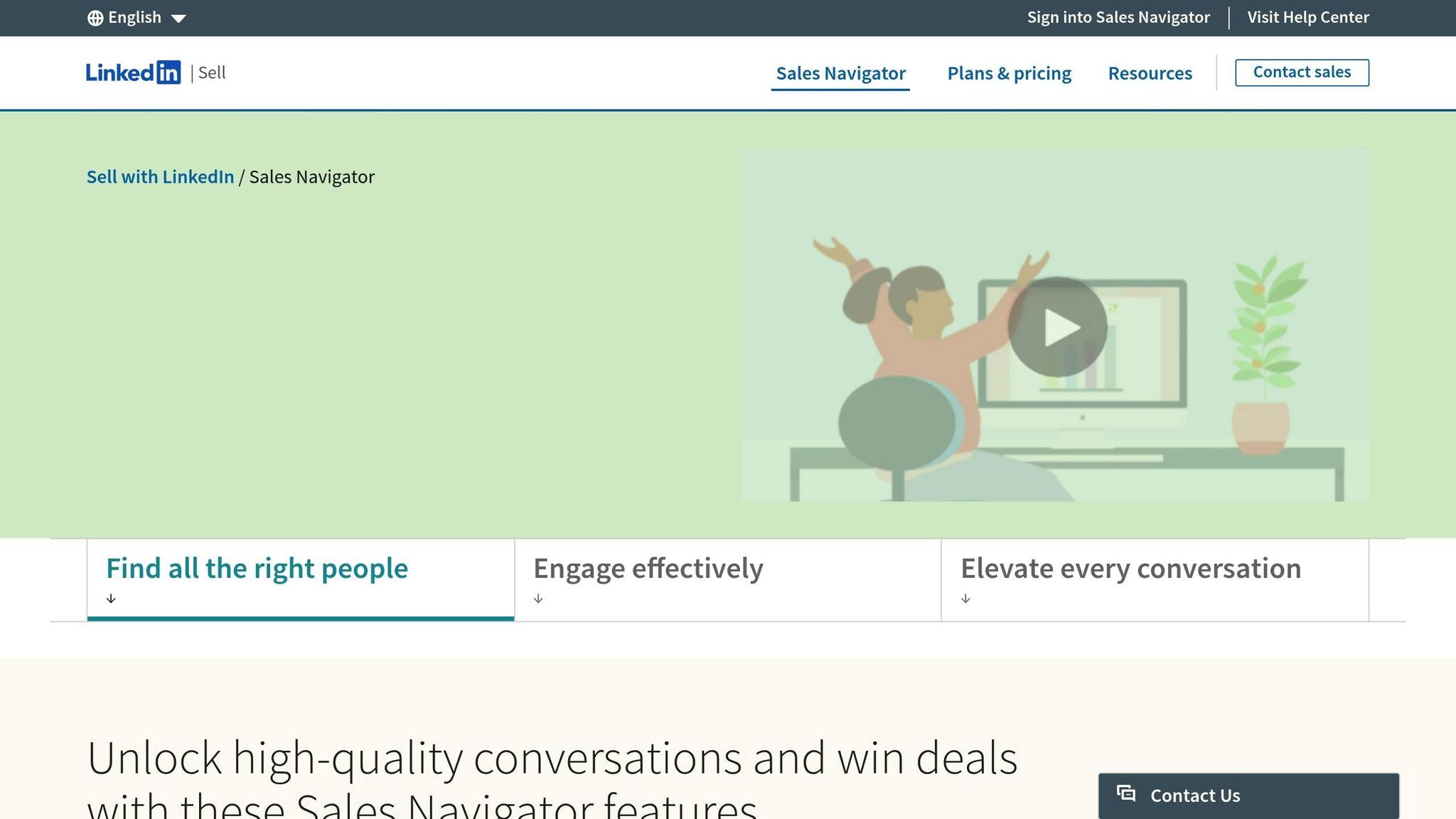
LinkedIn Sales Navigator taps into the vast network of LinkedIn to help sales professionals connect with top-tier prospects using advanced search tools and insightful features.
AI Capabilities
LinkedIn Sales Navigator takes prospecting to the next level with its AI-powered features. One standout is the Lead Recommendations tool, which uses machine learning to suggest potential leads. These suggestions are based on your saved leads, search history, and ideal customer profiles - and they get smarter over time as the system adapts to your interactions.
Another valuable feature is Account and Lead Insights, which keeps you updated on key developments from your target accounts, helping you time your outreach perfectly. Plus, TeamLink leverages your colleagues' networks to identify warm introductions to decision-makers, making those connections much easier to establish.
Multi-Channel Outreach
While LinkedIn Sales Navigator is primarily focused on LinkedIn interactions, it doesn’t stop there. It supports multi-channel prospecting by integrating with CRM systems and other outreach tools. The InMail feature allows you to message prospects outside your network, even if you're not connected. Each subscription tier includes a set number of InMail credits, and you can track both delivery and response rates for your messages.
CRM Integration
Sales Navigator works seamlessly with popular CRM platforms like Salesforce, Microsoft Dynamics, and HubSpot. This integration ensures that you can sync prospect data, track interactions, and keep detailed records - all without toggling between platforms. Another handy tool is Smart Links, which lets you share trackable content directly from Sales Navigator and automatically updates engagement metrics in your connected CRM.
Pricing
LinkedIn Sales Navigator offers a variety of pricing plans to suit different team sizes and needs. Options range from basic plans with limited InMail credits to more advanced packages that include enhanced filters, stronger CRM integrations, team collaboration tools, detailed reporting, and priority support. For the latest pricing and features, head over to LinkedIn Sales Navigator's official website.
sbb-itb-4c49dbd
4. Seamless.AI
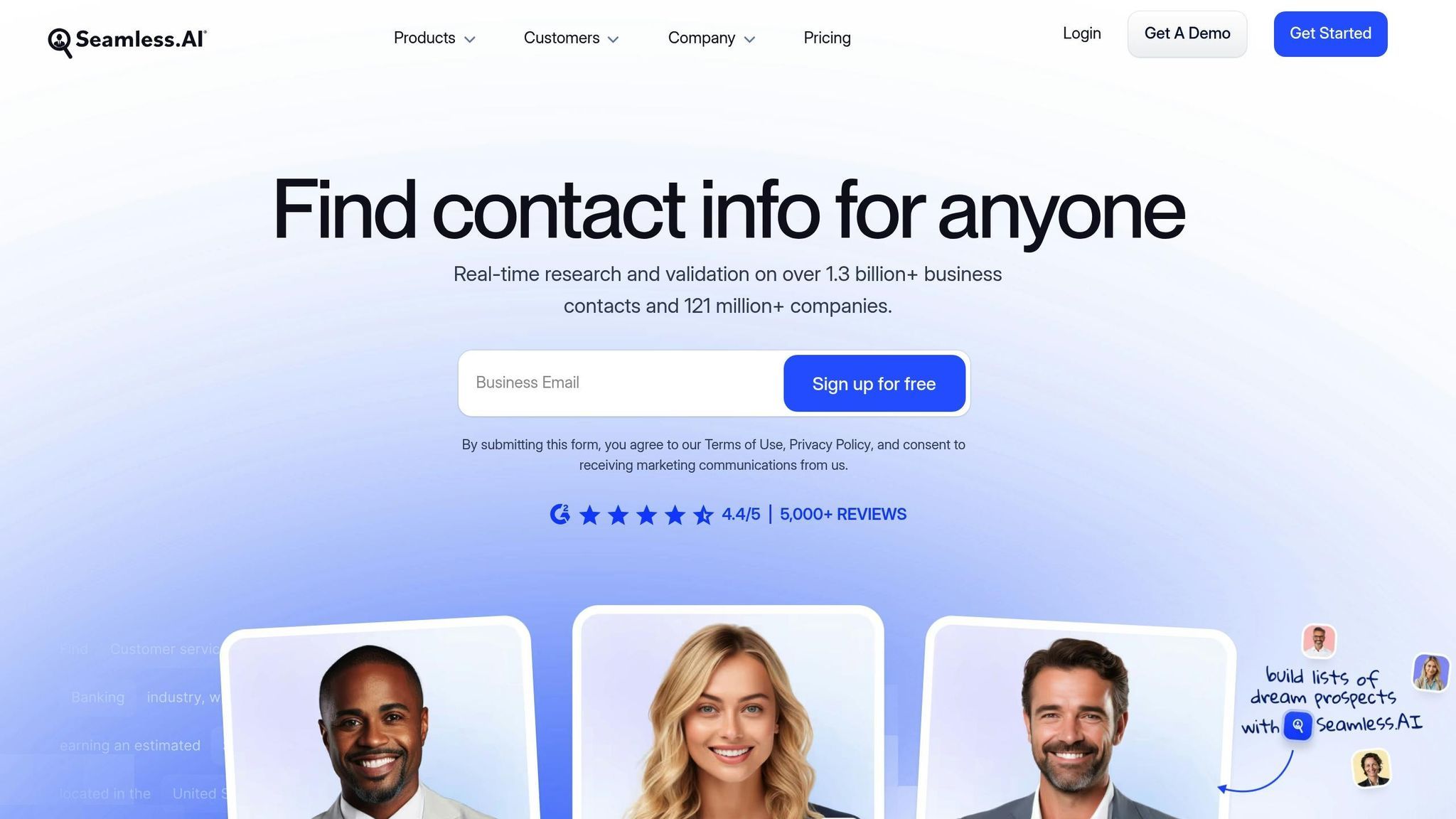
Seamless.AI is a real-time search engine designed to simplify B2B prospecting by providing accurate contact details and company information. It helps sales teams find and verify prospect data instantly, ensuring outreach campaigns are built on reliable information. By integrating seamlessly into your workflow, it eliminates the guesswork and inefficiencies of manual prospecting.
AI Capabilities
At the heart of Seamless.AI is its real-time data verification, powered by machine learning. The platform continuously scans the web to update contact details like email addresses and phone numbers, minimizing bounce rates and keeping your database current. This feature is a game-changer for sales teams tired of outdated or incomplete information.
The Smart Search functionality takes things further by using natural language processing (NLP). You can input detailed queries like "marketing directors at SaaS companies in California with 50-200 employees" and receive precise, tailored results. Over time, the AI adapts to your search habits, offering suggestions that align with your ideal customer profile.
Another standout feature is Lead Scoring, which uses AI to rank prospects based on their potential to convert. Metrics like company growth, recent funding rounds, job changes, and technology adoption are analyzed to help you prioritize your efforts effectively.
Multi-Channel Outreach
While Seamless.AI excels in data collection, its outreach capabilities are more basic compared to specialized platforms. A handy Chrome extension allows you to gather contact information directly from LinkedIn profiles, company websites, and other sources, making it easy to build a list as you browse.
The platform also includes basic email verification to ensure that your emails reach the right inboxes. For more robust campaigns, you can export verified data to dedicated outreach tools. Seamless.AI integrates smoothly with popular platforms, enabling you to use this data for email sequences, social media outreach, or phone campaigns.
CRM Integration
Seamless.AI simplifies CRM management by offering one-click integrations with leading systems like Salesforce, HubSpot, and Pipedrive. This feature allows you to push verified contact data directly into your CRM, eliminating the need for tedious manual entry and ensuring your records stay accurate and up to date.
For added flexibility, the bulk export feature lets you download prospect lists in CSV format. This makes it easy to import data into virtually any CRM or sales tool. Real-time sync ensures that updates to contact information are reflected across all connected systems.
Pricing
Seamless.AI uses a credit-based pricing model, where each contact export deducts credits from your monthly allowance. The platform offers a free plan with limited credits, ideal for individuals or small teams looking to try out the tool.
Paid plans offer additional credits and features like advanced search filters, team collaboration tools, and priority support. For larger organizations, enterprise plans include custom credit limits, dedicated account managers, and enhanced security options to meet more extensive prospecting needs.
5. Gong
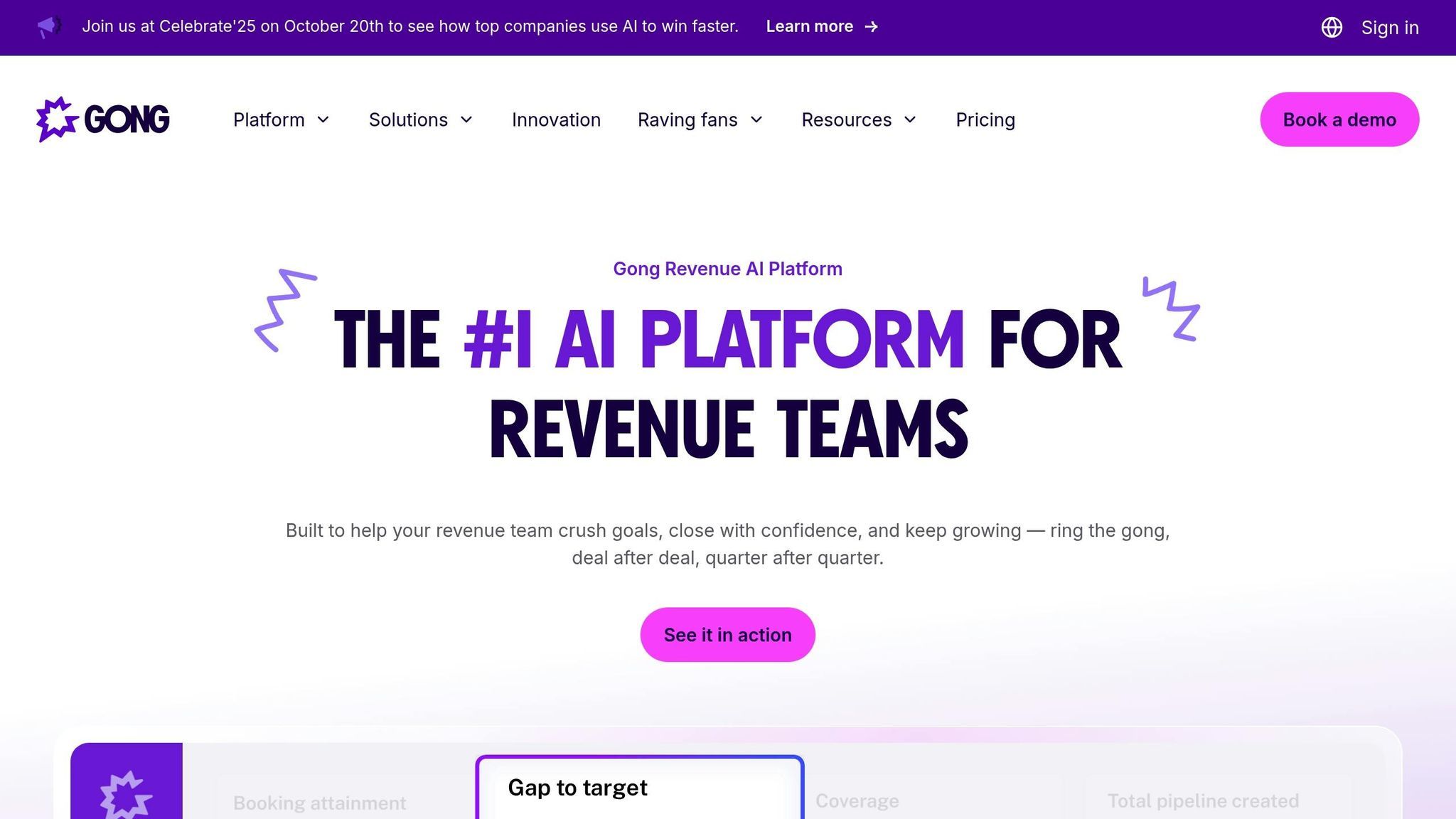
Gong is a conversation intelligence platform designed to analyze sales calls, emails, and meetings using AI. It extracts actionable insights to fine-tune prospecting strategies and improve the chances of closing deals.
AI Capabilities
At its core, Gong transcribes and analyzes sales interactions across various channels. Using natural language processing, it identifies critical details like prospect behaviors, objections, and buying signals. It also evaluates metrics such as talk-to-listen ratios and conversational trends to predict deal success and flag potential risks in the sales pipeline.
Multi-Channel Outreach
Gong's insights are invaluable for refining multi-channel prospecting efforts. It helps sales teams craft better opening statements, value propositions, and follow-up strategies. The platform can even detect competitor mentions, allowing teams to adjust their messaging and positioning accordingly. By analyzing calls, video meetings, and emails, Gong delivers a complete picture of prospect engagement. Features like call recording and analysis empower teams to continuously improve their outreach tactics.
CRM Integration
Gong integrates smoothly with popular CRM platforms like Salesforce, HubSpot, and Microsoft Dynamics. It automatically syncs conversation data, call recordings, and insights into CRM records, minimizing manual data entry. Its activity capture feature updates CRM fields with key outcomes, next steps, and discussion points. Additionally, Gong's insights appear directly in CRM dashboards, giving sales managers a clear view of deals that need immediate attention.
Pricing
Gong operates on a per-seat pricing model with annual contracts. Costs depend on the selected features and organization size. Setup and integration typically require professional services, which may add to the overall expense.
Pros and Cons Comparison
Here’s a quick breakdown of the key strengths and limitations of each tool, summarized in the table below. This can serve as a handy reference to weigh the benefits and challenges of these platforms.
| Tool | Key Strengths | Key Limitations |
|---|---|---|
| Apollo.io | Features an extensive contact database, built-in email sequencing, and affordable options for small teams | Data quality can vary; lacks some of the more advanced AI functionalities |
| HubSpot Sales Hub | Integrates seamlessly with its CRM; provides a robust free tier and strong sales pipeline tools | Advanced tools come at a premium; may feel overwhelming for smaller teams due to its complexity |
| LinkedIn Sales Navigator | Direct access to LinkedIn's network; offers detailed search filters and real-time updates | Limited to LinkedIn’s ecosystem; needs additional tools for email outreach; subscription costs can add up |
| Seamless.AI | Verifies contacts in real time; easy-to-use prospecting features; reliable contact data | Can be expensive on a per-contact basis; lacks robust automation features |
| Gong | Excels in conversation intelligence and call analysis; integrates well with CRMs | Requires annual contracts; higher price point; focuses more on call analysis than direct prospecting tools |
This table provides a snapshot of what each tool brings to the table, along with its potential drawbacks. Pair these insights with the detailed reviews above to make the best choice for your prospecting needs.
Final Thoughts
AI-powered sales prospecting tools are reshaping how U.S. sales professionals tackle one of their toughest challenges: effective outreach. With 40% of salespeople identifying prospecting as the hardest part of their job [6], these tools are addressing a long-standing obstacle. The numbers speak for themselves - sales teams leveraging AI can experience up to 1.3 times higher revenue compared to those without it [5]. Considering the average salesperson spends 6-8 hours per week on prospecting [6], the potential for saving time and boosting revenue is enormous.
But here’s the catch: data quality is the cornerstone of successful AI prospecting. Without accurate, verified contact information, even the most advanced tools will fall short. Whether you're using a verified directory or tapping into extensive databases, ensuring the accuracy of your contact lists is critical. Strong data verification processes are non-negotiable if you want to maximize outreach success and maintain actionable prospect lists.
Seamless integration is another key factor to consider. Tools that connect effortlessly with CRMs like HubSpot Sales Hub or platforms like LinkedIn Sales Navigator can enhance your existing workflows without causing disruptions. Instead of overhauling your process, these integrations aim to amplify what already works. By streamlining workflows and automating repetitive tasks, such features not only improve adoption rates but also contribute to overall cost efficiency.
Speaking of costs, pricing varies significantly across platforms. While entry-level options may fit smaller budgets, premium features often come with a higher price tag.
Ultimately, even the most advanced AI tools thrive when paired with human oversight. Technology can handle the heavy lifting - like data analysis and task automation - but the human touch is irreplaceable. Sales professionals still need to review AI-generated insights, tailor messages, and build genuine relationships. These tools are designed to enhance, not replace, the thoughtful judgment and personalization that drive meaningful sales conversations.
If you’re ready to dive in, start by pinpointing your biggest prospecting challenges - whether it’s finding leads, crafting personalized emails, or managing multi-channel outreach. Then, align those needs with the strengths of specific tools. Test a few options through pilot programs before committing to a full rollout. This approach ensures you choose the right solution to meet your goals.
FAQs
How can AI tools help sales teams boost lead engagement and work more efficiently?
AI-powered sales prospecting tools are transforming the way sales teams work by automating time-consuming tasks like lead scoring, data entry, and follow-ups. By handling these repetitive activities, they allow sales reps to dedicate more time to what really matters - building meaningful connections with top-priority prospects. These tools go a step further by leveraging advanced data analysis to pinpoint the most promising leads. They also enable teams to send personalized outreach messages on a large scale, which significantly boosts engagement. On top of that, they monitor real-time engagement metrics, providing sales teams with actionable insights to refine their strategies and close deals more effectively.
What should I look for in an AI outreach tool to improve my sales prospecting?
When choosing an AI outreach tool for sales prospecting, pay attention to features like personalization, analytics, and automation. A good tool should enable you to craft customized messages, track performance metrics, and handle repetitive tasks efficiently, freeing up your time for more strategic work. You’ll also want to assess scalability, data security, and the quality of vendor support. The tool should adapt as your team grows, safeguard sensitive information, and offer dependable support when challenges arise. Lastly, take a close look at the cost to ensure it aligns with your budget while offering strong value for your sales initiatives.
Why is data quality essential for AI-powered sales prospecting tools?
Data quality is at the heart of making AI-powered sales prospecting tools work effectively. When data is clean, accurate, and well-organized, AI can pinpoint top-priority leads, craft tailored outreach strategies, and deliver dependable predictions. This combination leads to better sales results and more efficient processes. However, if the data is messy or inaccurate, the consequences can be costly. Poor-quality data leads to flawed insights, wasted resources, and a loss of confidence in AI-driven methods. Maintaining data integrity is essential to getting the most out of AI tools in sales prospecting.